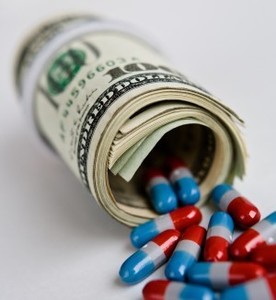Introducing biosimilars of complex biologicals used to treat illnesses such as cancer and rheumatoid arthritis could cut spending on biologicals in the US by US$44 billion over the next decade, according to an analysis carried out by the RAND Corporation.
Biosimilars could save US$44.2 billion over 10 years
Home/Reports
|
Posted 09/01/2015
 0
Post your comment
0
Post your comment

Independent health policy research organization, the Rand Corporation, searched peer reviewed literature for studies on potential direct cost savings from biosimilars. Relevant industry perspectives, government publications and reports from various consulting firms were also reviewed.
The review identified a range of studies, some presenting retrospective empirical analyses and others reporting prospective modelling or prescriptive policy analysis. The studies drew on a variety of sources for the basis of their estimates, including evidence from US generics markets and from the EU’s experience with biosimilars. Many studies included analysts’ assumptions and other expert opinion.
The results of the review showed that overall studies estimating the short- to mid-term, i.e. within 10 years, savings from biosimilars arrive at a range of 10−50% reduction in unit price. However, the impact on spending will be smaller than the difference in price because it is unlikely that every patient will transition from an originator to a biosimilar.
The study assumed year-on-year originator growth of 1%, an increase in the share of originator sales exposed to biosimilar competition from 10% in year 1 to 20% in year 10, biosimilar market penetration of 6% and a biosimilar price discount due to competition of 35%.
Given these assumptions, the potential direct cost savings calculated were US$44.2 billion over 10 years, or about 4% of total biologicals sales over the same period. Reducing the price discount to 10%, however, would cut potential savings to US$12.6 billion over 10 years.
Increasing penetration to 90% (with a 35% reduction in price) would increase cost savings to US$66.2 billion over 10 years, while decreasing penetration to 30% would result in cost savings of US$33.9 billion over 10 years.
The potential for cost savings varies across biological classes, with monoclonal antibodies, anti-TNF-alpha products and insulins together accounting for more than 60% of estimated savings.
Related articles
Generics and biosimilars contribute to European drug savings
Factors supporting a sustainable European biosimilars market
Permission granted to reproduce for personal and non-commercial use only. All other reproduction, copy or reprinting of all or part of any ‘Content’ found on this website is strictly prohibited without the prior consent of the publisher. Contact the publisher to obtain permission before redistributing.
Copyright – Unless otherwise stated all contents of this website are © 2015 Pro PharmaCommunications International. All Rights Reserved.
Source: Rand
Guidelines
New guidance for biologicals in Pakistan and Hong Kong’s independent drug regulatory authority
Canada poised to remove requirement for Phase III trials for biosimilars
Policies & Legislation
Argentina streamlines drug approval process
ANVISA tackles 24-month backlog in biologicals post-registration petitions
Advancing biologicals regulation in Argentina: from registration to global harmonization

Home/Reports Posted 10/10/2025
China-to-West pharma licensing deals surge in 2024 amid innovation push

Home/Reports Posted 22/05/2025
The best selling biotechnology drugs of 2008: the next biosimilars targets








Post your comment